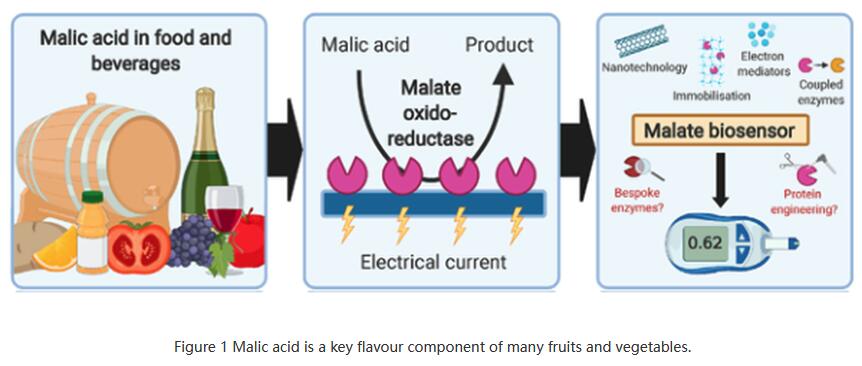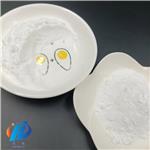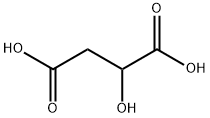The Application of Malic acid
General description
Malic acid is a 2-hydroxydicarboxylic acid that is succinic acid in which one of the hydrogens attached to a carbon is replaced by a hydroxy group. It has a role as a food acidity regulator and a fundamental metabolite. It is a 2-hydroxydicarboxylic acid and a C4-dicarboxylic acid. It derives from a succinic acid. It is a conjugate acid of a malate(2-) and a malate.Malic acid has been used in trials studying the treatment of Xerostomia, Depression, and Hypertension. Malic acid (2-hydroxybutanedioic acid) is a four-carbon dicarboxylic acid, which has attracted great interest dueto its wide usage as a precursor of many industrially important chemicals in the food, chemicals, and pharmaceutical industries. Several mature routes for malic acid production have been developed, such as chemical synthesis, enzymatic conversion and biological fermentation[1].
Application
Antiperspirant activity is of primary interest in the cosmetic industry as antiperspirants and Malic acid is a key flavour component of many fruits and vegetables. There is significant interest in technologies for monitoring its concentration, particularly in winemaking. In this review we systematically and comprehensively chart progress in the development of enzyme-based amperometric biosensors for malic acid. The components and analytical parameters of malic acid sensors that have been reported over the past four decades, discussing their merits and pitfalls in terms of accuracy, sensitivity, linear range, response time and stability. We discuss how advances in electrode materials, electron mediators and the use of coupled enzymes have improved sensitivity and minimised interference, but also uncover a trade-off between sensitivity and linear range. A particular focus of our review is the three types of malate oxidoreductase enzyme that have been used in malic acid biosensors. We describe their different properties and conclude that identifying and/or engineering superior alter-natives will be a key future direction for improving the commercial utility of malic acid biosensors.

It has now been 40 years since the first enzyme-based amperometric biosensor for malic acid was described. In the ensuing decades, key operational parameters including sensitivity, linear range, and freedom from interference have been improved through the use of coupled enzymes and advances in electrode design. At the same time, the field has remained heavily dependent on a small number of malate oxidoreductase enzymes as the core sensor components. In particular, most biosensors have employed MDHs, whereas promising alternatives such as MEs and MQOs have remained relatively unexplored. The proliferation of sequence da- tabases, the ease of gene synthesis, and advances in protein engineering suggest that a bright future direction will lie in identifying new and better enzymes for expanding the commercial utility of malate biosensors, particularly in the food and beverage industry.
Synthesis
With depletion of fossil fuels and concerns regarding environmental issues, biological production of malic acid has attracted more attention, which mainly consists of three pathways, namely non-oxidative pathway, oxidative pathway and glyoxylate cycle. In recent decades, metabolic engineering of model strains, and process optimization for malic acid production have been rapidly developed. Hence, this review comprehensively introduces an overview of malic acid producers and highlight some of the successful metabolic engineering approaches.
Figure 2 Three possible pathways responsible for malic acid production, using oxaloacetic acid and/or acetyl-CoA as precursors. A: Reductive tricarboxylic acid (rTCA) pathway. B: Tricarboxylic acid (TCA) cycle pathway. C: Glyoxylate cycle pathway.
Generally, biological malic acid production only occurred under the conditions of high carbon-to-nitrogen ratio, which is usually limited by its low yield, titer, and productivity due to the end-product inhibition. In addition, the formation of by-products, like succinic and acetic acid renders the downstream process of separation and purification. Hence, further work is still needed to develop more robust strains and design rational processes to achieve high malic acid production[2].
Agriculture
The priming effects of different concentrations of malic acid on Different Sugarbeet Seeds were different when Sugarbeet Seeds were treated for 24 hours. For td701 Sugarbeet Seeds, different concentrations of malic acid could not significantly improve the germination potential and germination rate of td701 Sugarbeet Seeds; When td701 seeds were treated with 1,2,10 mmol/l malic acid, the germination index of seeds could be improved, and the concentration of 2 mmo/l was the best[3].
Reference
1.Matthews C. J., Andrews E. S. V. & Patrick W. M., "Enzyme-based amperometric biosensors for malic acid – A review," Analytica Chimica Acta, Vol.1156(2021), p.338218.
2.Dai Z., Zhou H. & Zhang S. et al., "Current advance in biological production of malic acid using wild type and metabolic engineered strains," Bioresource Technology, Vol.258(2018), pp.345-353.
3.Liuxiaoyue, Xingwang, liudali, etc.: Study on the effect of malic acid on the vitality of sugar beet seeds, China agronomy bulletin, No. 12, 2022, pp. 33-40.
);You may like
Related articles And Qustion
Lastest Price from Malic acid manufacturers

US $1800.00/T2024-04-28
- CAS:
- 6915-15-7
- Min. Order:
- 20T
- Purity:
- 99%
- Supply Ability:
- 100tons

US $15.00/kg2024-04-27
- CAS:
- 6915-15-7
- Min. Order:
- 1kg
- Purity:
- 99.912%
- Supply Ability:
- 10ton



